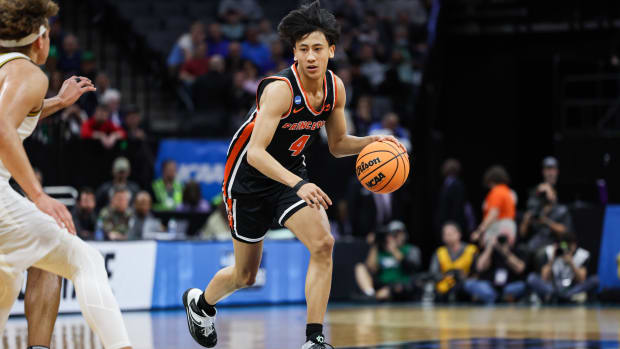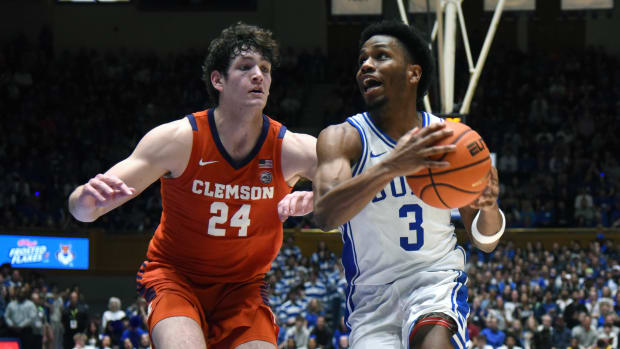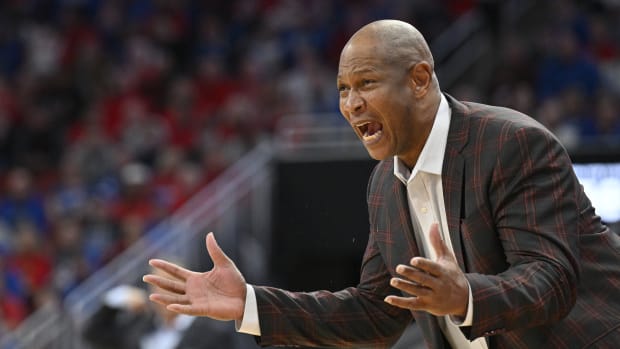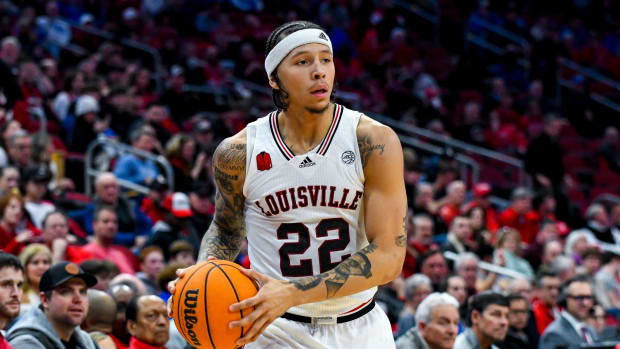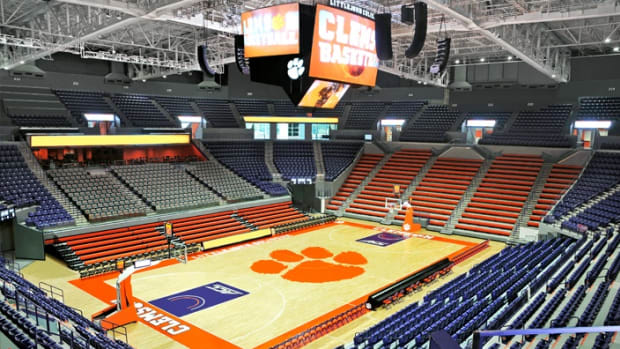Inside the Numbers: A Look At Clemson's Outside Shooting Propensity
Following Sunday’s 61-57 loss to Notre Dame, Clemson coach Brad Brownell noted that the Tigers needed two more 3-point shots to fall.
During the game, Clemson shot 9-of-34 (26 percent) from behind the arc. After the game, Brownell wasn’t disappointed with shot selection when asked if the Tigers took too many 3s.
“Maybe a little, but we got a lot of really good looks now,” Brownell said. “Alex (Hemenway) made shots that were hard, but we had some other guys that got some pretty good looks. Really, those are more high-percentage shots than a pull-up 15-,16-footer. The analytics say that.”
That’s where analytics can be difficult to understand sometimes. Conventional wisdom says Clemson had a better chance of making three more 2-point baskets than making two more 3s. The Tigers shot 11-of-22 from inside the arc.

Clemson Tigers guard Al-Amir Dawes (2) shoots a three point basket against the Pittsburgh Panthers during the first half at the Petersen Events Center on Wednesday.
Charles LeClaire-USA TODAY Sports
However, that’s not been the conventional way of doing things in college basketball or with this team.
The Tigers do not shoot the ball well. There aren’t many metrics to dispute that.
Before Wednesday night’s offensive explosion, in which the Tigers shot 50 percent from the field and made 13 of their 22 3-point attempts in a 20-point victory over Pitt, Clemson was making 41.7 percent of its shots, which ranked 250th nationally out of 353 teams.
The Tigers’ 30.9 percent from the 3-point line was ranked 292nd. Wednesday’s performance jumped them up to 31.8 (246th)
Inside the arc, Clemson has been above average. They’re making 50.9 percent, which ranks 108th nationally.
The 3-pointer is killing their effective field-goal percentage, which gives more value to 3-point shots instead of giving them the same value as 2s in regular field-goal percentage. It gives a good description of a team’s ability to shoot.
Before Wednesday, Clemson ranked 196th nationally with a 48.9 eFG%. During a three-game losing skid, the Tigers scored 44 (at Wake Forest), 44 (at Virginia) and 57 (vs. Notre Dame), that number plummeted to 38.6.
After the Pitt performance, Clemson jumped up to an eFG% of 49.4 (173th).
Here’s the thing: Clemson shoots a poor percentage of 3s, yet the Tigers take the 37th most shots from behind the arc in the country. That's doesn't seem like good shot selection for a team that's pretty good at making 2s.
It's somewhat surprising that it's been that way in the sport this season. The 3-point arc was moved back 16.75 inches, but a study released last week showed that the increase in distance has not cut down on team's frequency to settle for the deep shot.
“I’m surprised that we’re struggling as much as we are,” Brownell said after Sunday’s loss. “Our guys put time in. They practice. They come in on their own. John Newman and Hunter Tyson shoot as much as anybody and 1-for-9 (Sunday). That’s hard.”
It also makes it hard to win, but the Tigers have found ways to stay in games because of their defense, which is top 70 in both scoring defense and field-goal defense.
Some of Clemson's offensive woes are talent and skill related, but there also feels like a psychological aspect to it. When things are going great, it seems easy to sit outside and bang 3s. The game plan isn't to stand around and pass until somebody sees a shot they like.
The Tigers have fell victim to better scouting, sure, but there simply isn't a player who can go get their own shot with enough frequency.
What happened at Pitt was the perfect storm of execution and being in sync.
Clemson held the Panthers 15 points under their season scoring average, and the Tigers made 50 percent of their shots. They took four less 3s per game than their season average Wednesday and made five more than they usually do.
Clemson made 75 percent of its free throws, outrebounded the Panthers and cut down significantly on some early bad turnovers. There was movement and flow to the offense that was missing the previous three games.
They were efficient in nearly every way. How sustainable is that? According to the numbers, expect Clemson to regress the offensive mean.
